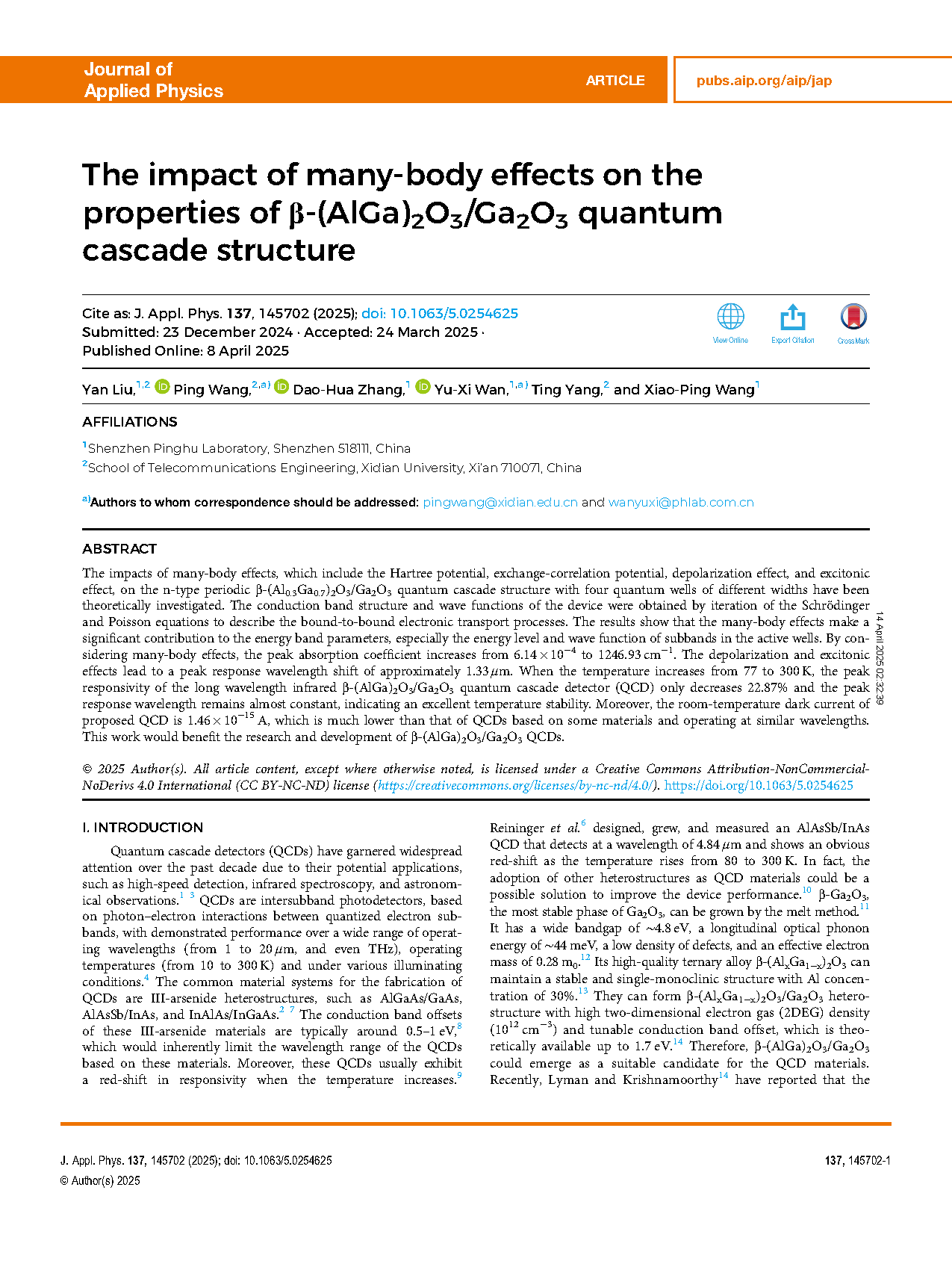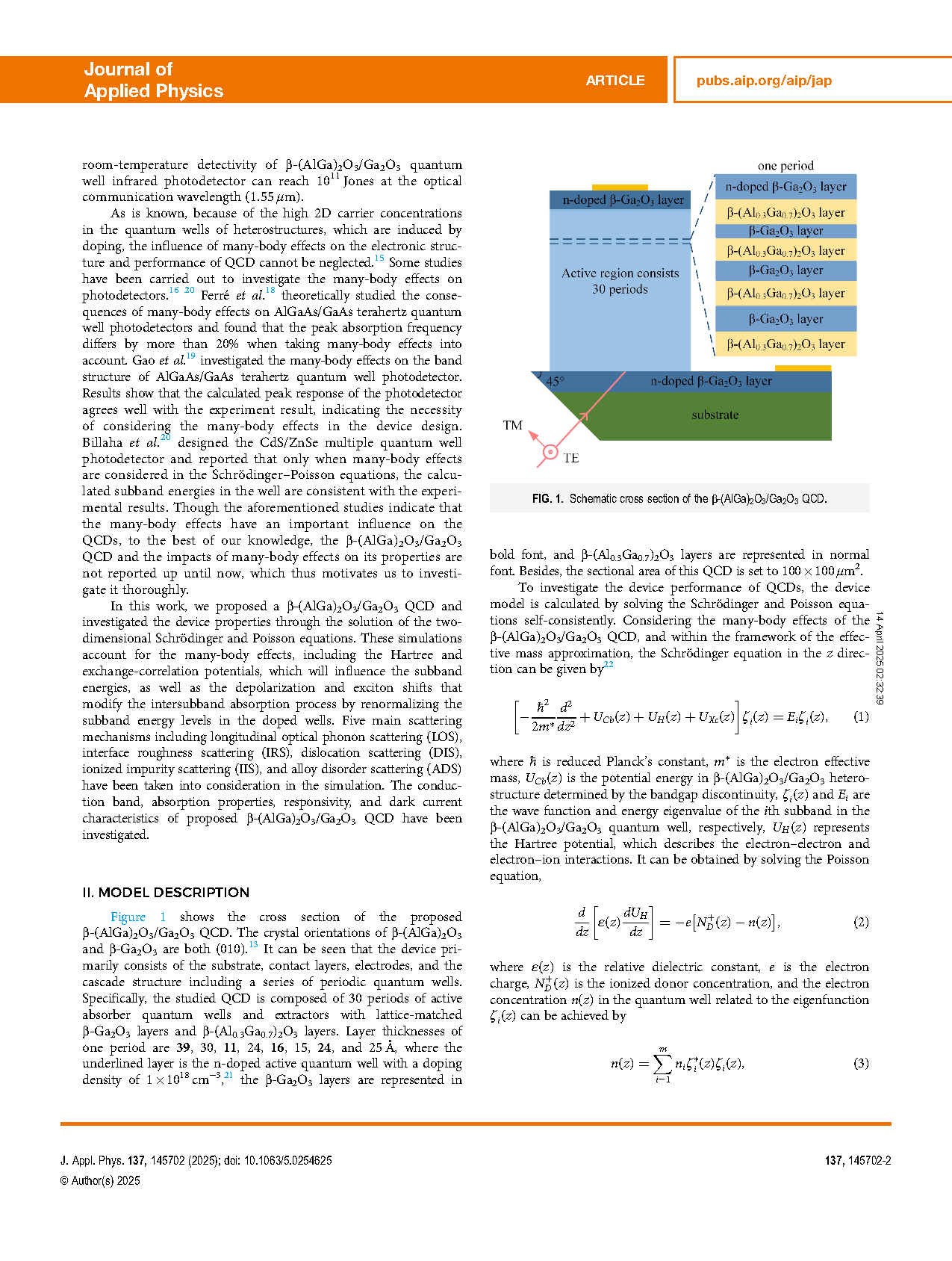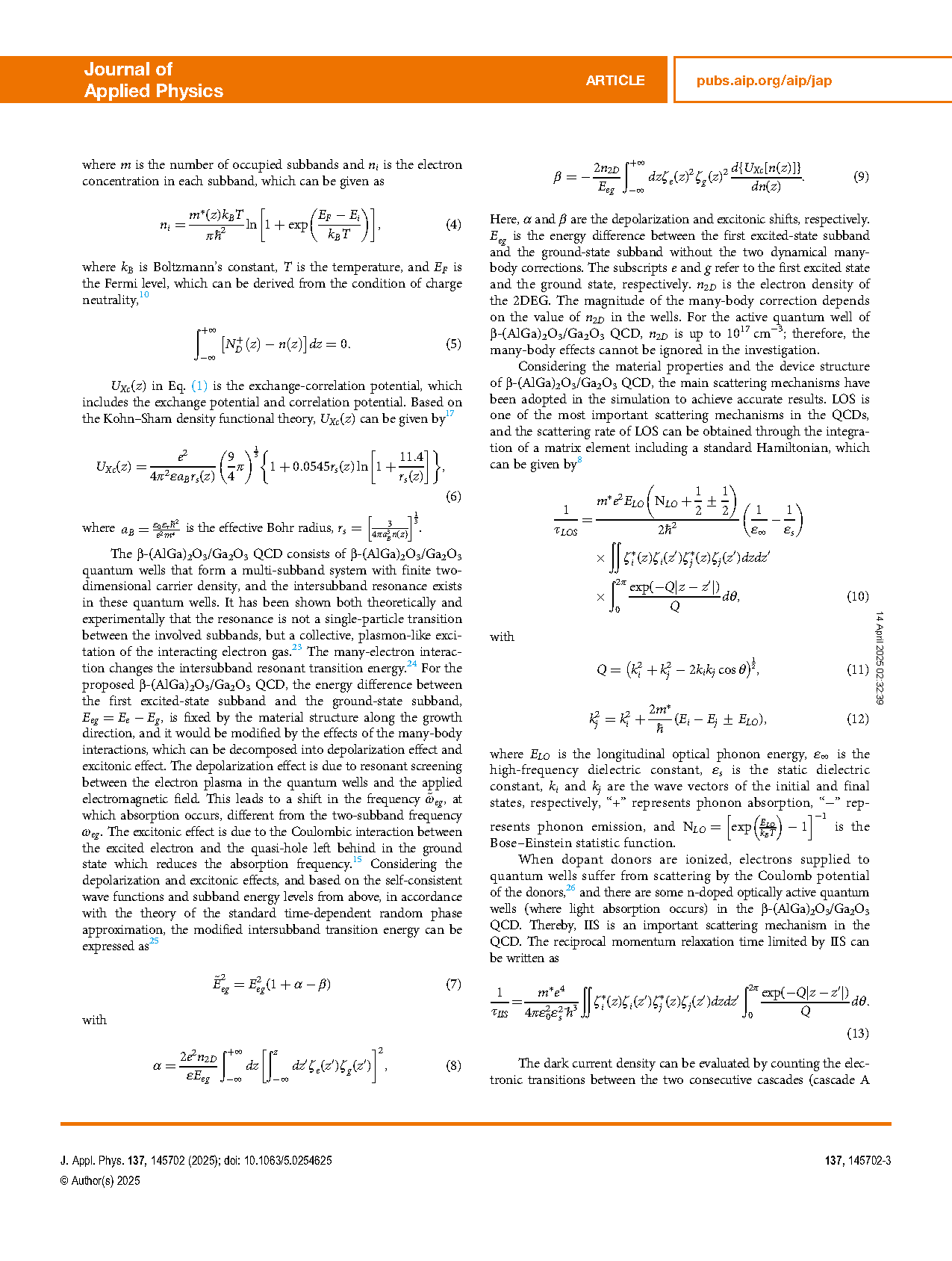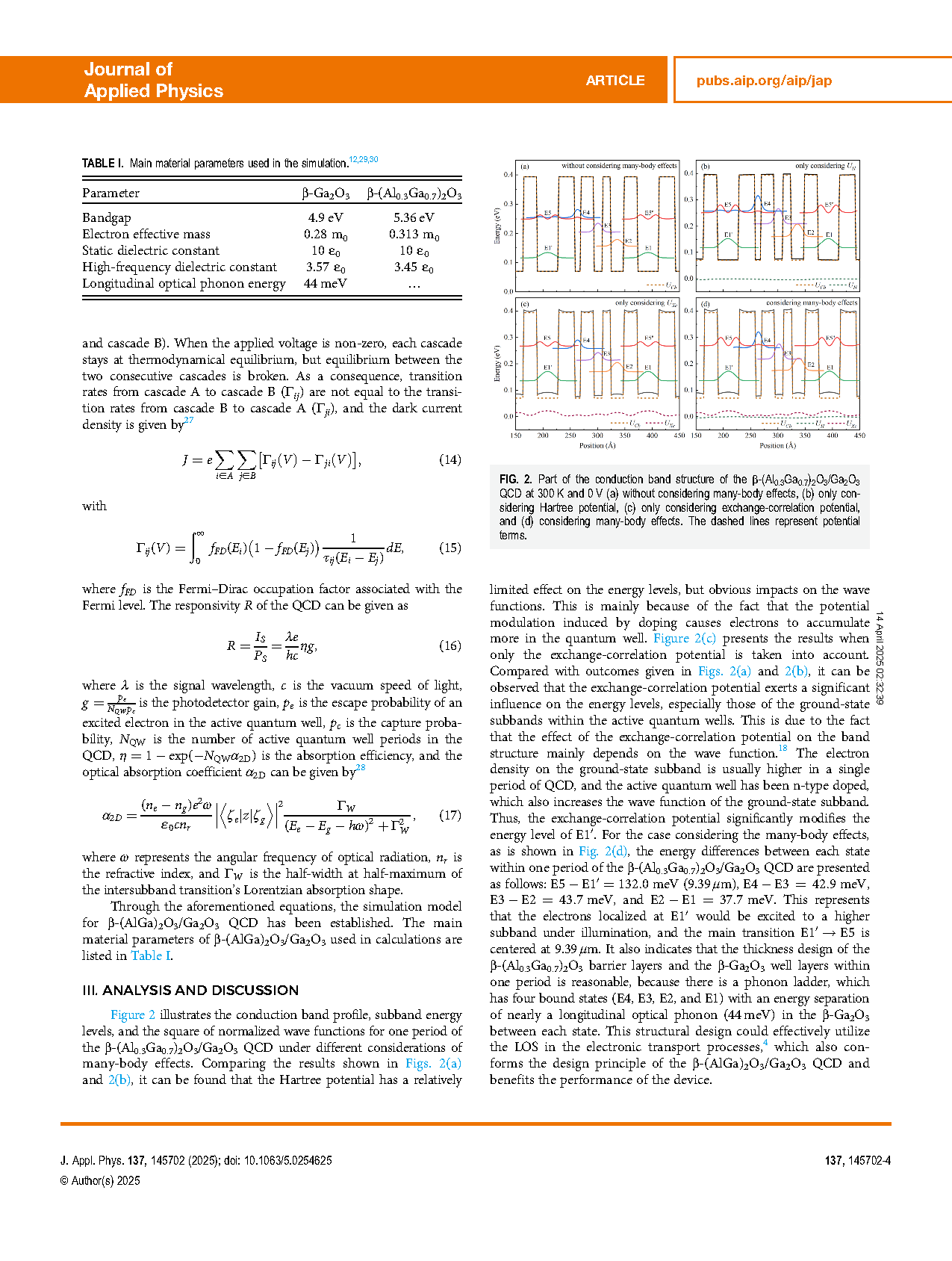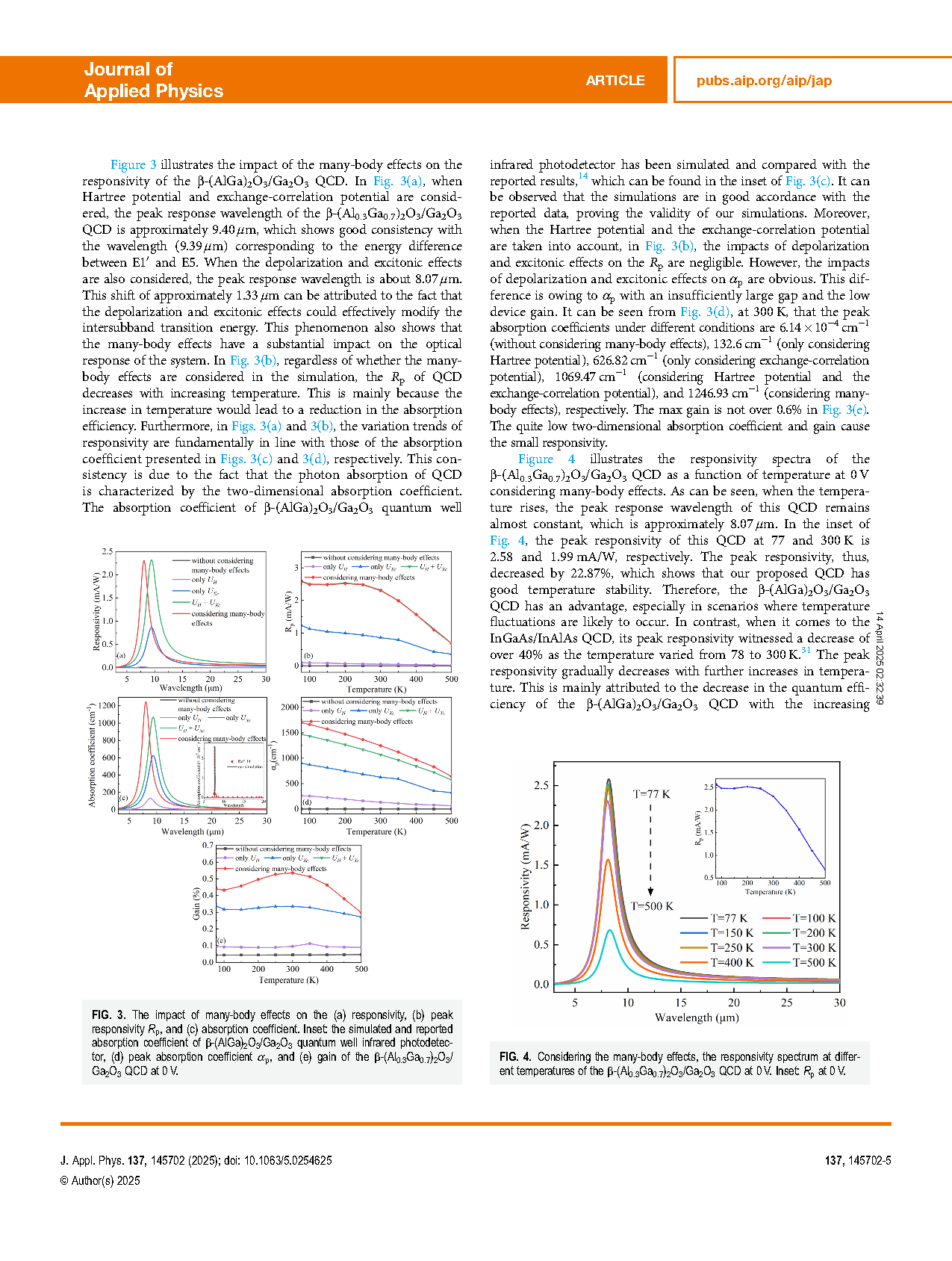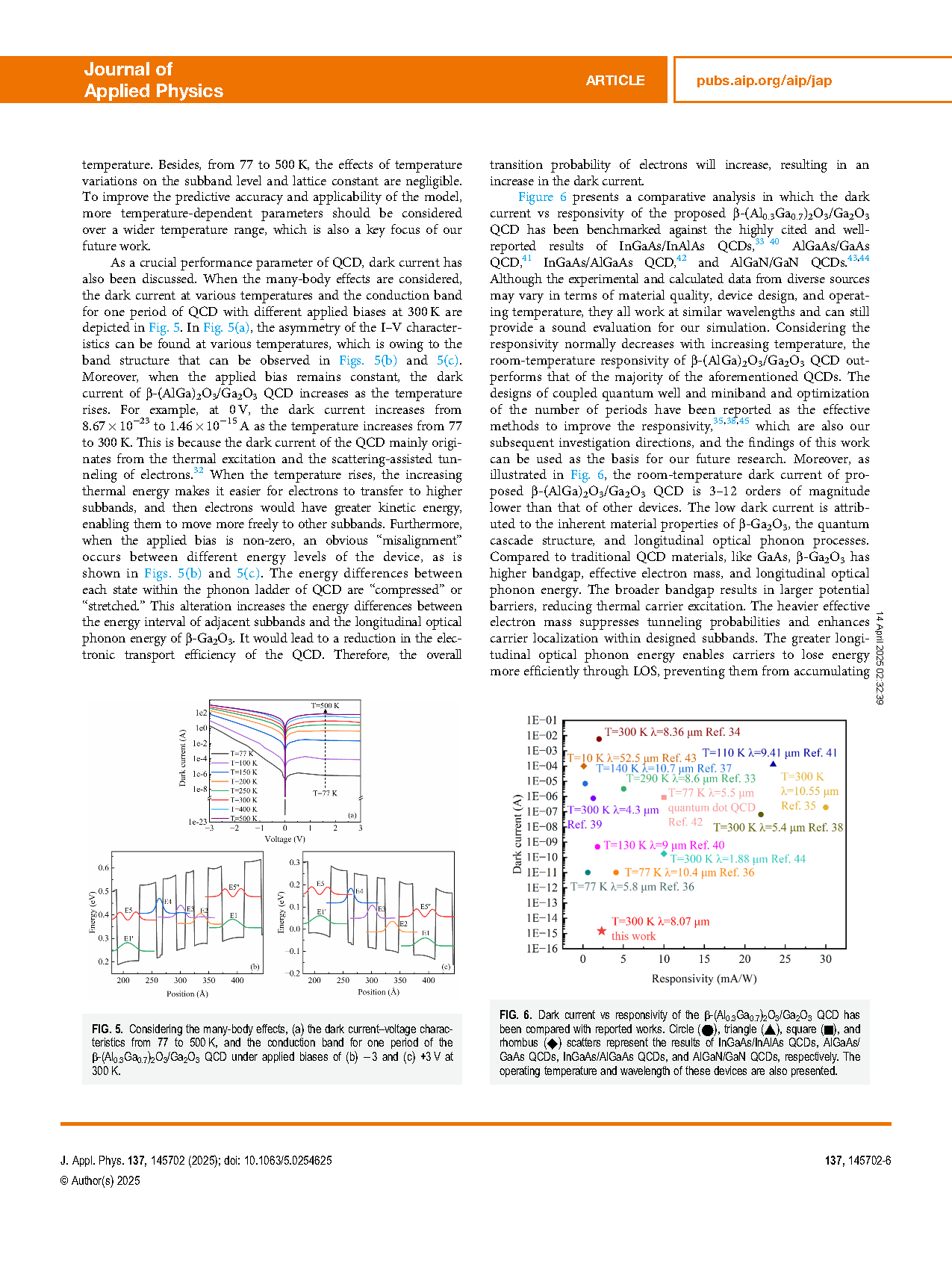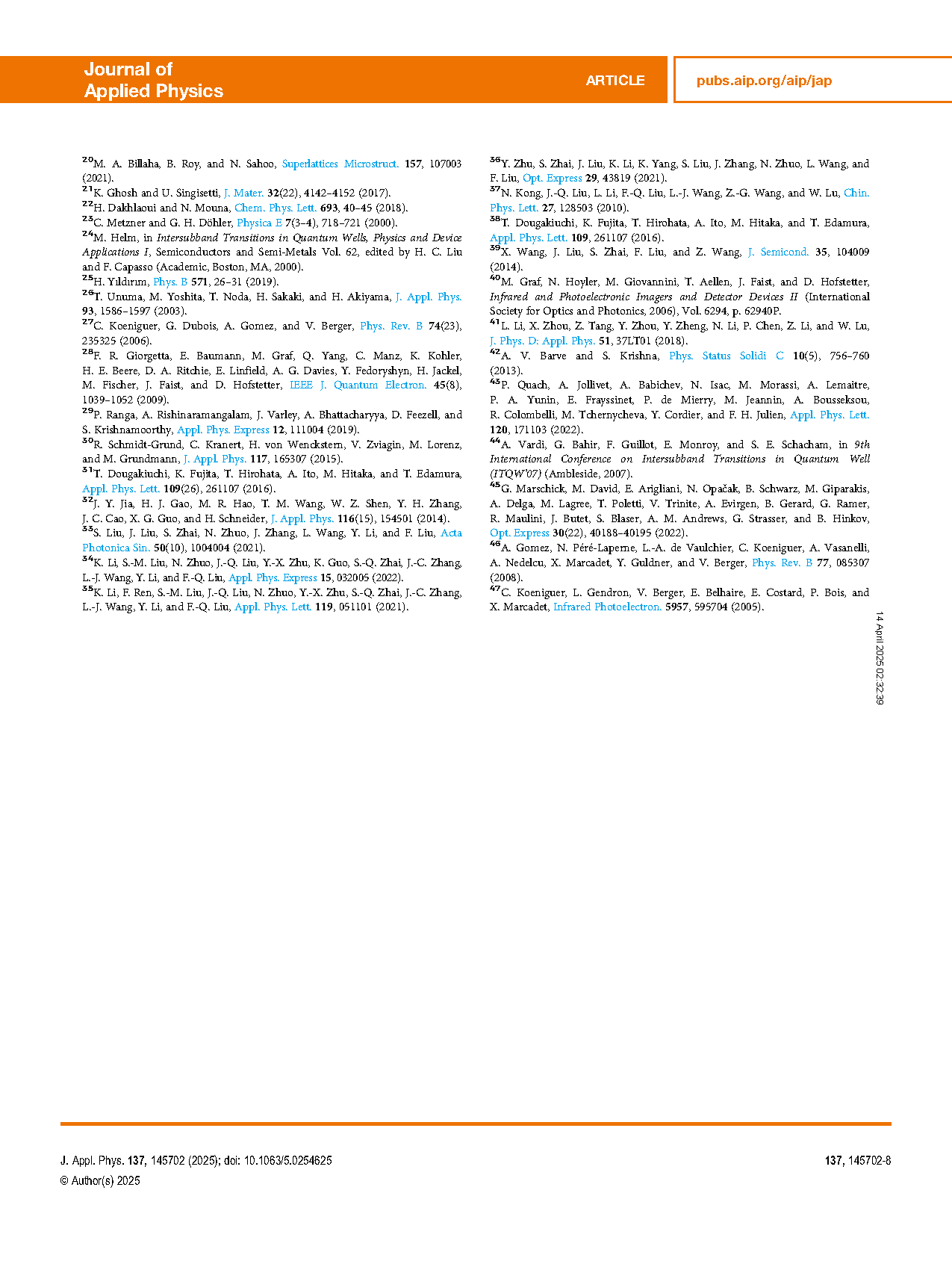
【Member Papers】The impact of many-body effects on the properties of β-(AlGa)₂O₃/Ga₂O₃ quantum cascade structure
日期:2025-04-18阅读:394
Researchers from the Shenzhen Pinghu Laboratory have published a dissertation titled "The impact of many-body effects on the properties of β-(AlGa)2O3/Ga2O3 quantum cascade structure" in Journal of Applied Physics.
Project Support
This work was supported by the National Natural Science Foundation of China (NNSFC) (Grant No. 61474090), the Key Research and Development Program of Shaanxi Province of China (Grant No. 2017ZDXM-GY-052), the Fundamental Research Funds for the Central Universities and the Innovation Fund of Xidian University (Grant No. 20109205456), and the Shenzhen Pinghu Laboratory Project (Grant No. 224110).
Background
Quantum cascade detectors (QCDs) have garnered widespread attention over the past decade due to their potential applications, such as high-speed detection, infrared spectroscopy, and astronomical observations. QCDs are intersubband photodetectors, based on photon–electron interactions between quantized electron subbands, with demonstrated performance over a wide range of operating wavelengths (from 1 to 20 μm, and even THz), operating temperatures (from 10 to 300 K) and under various illuminating conditions. The common material systems for the fabrication of QCDs are III-arsenide heterostructures, such as AlGaAs/GaAs, AlAsSb/InAs, and InAlAs/InGaAs. The conduction band offsets of these III-arsenide materials are typically around 0.5–1 eV, which would inherently limit the wavelength range of the QCDs based on these materials.
In this work, we proposed a β-(AlGa)2O3/Ga2O3 QCD and investigated the device properties through the solution of the two-dimensional Schrödinger and Poisson equations. These simulations account for the many-body effects, including the Hartree and exchange-correlation potentials, which will influence the subband energies, as well as the depolarization and exciton shifts that modify the intersubband absorption process by renormalizing the subband energy levels in the doped wells. Five main scattering mechanisms including longitudinal optical phonon scattering (LOS), interface roughness scattering (IRS), dislocation scattering (DIS), ionized impurity scattering (IIS), and alloy disorder scattering (ADS) have been taken into consideration in the simulation. The conduction band, absorption properties, responsivity, and dark current characteristics of proposed β-(AlGa)2O3/Ga2O3 QCD have been investigated.
Abstract
The impacts of many-body effects, which include the Hartree potential, exchange-correlation potential, depolarization effect, and excitonic effect, on the n-type periodic β-(Al0.3Ga0.7)2O3/Ga2O3 quantum cascade structure with four quantum wells of different widths have been theoretically investigated. The conduction band structure and wave functions of the device were obtained by iteration of the Schrödinger and Poisson equations to describe the bound-to-bound electronic transport processes. The results show that the many-body effects make a significant contribution to the energy band parameters, especially the energy level and wave function of subbands in the active wells. By considering many-body effects, the peak absorption coefficient increases from 6.14 × 10−4 to 1246.93 cm−1. The depolarization and excitonic effects lead to a peak response wavelength shift of approximately 1.33 μm. When the temperature increases from 77 to 300 K, the peak responsivity of the long wavelength infrared β-(AlGa)2O3/Ga2O3 quantum cascade detector (QCD) only decreases 22.87% and the peak response wavelength remains almost constant, indicating an excellent temperature stability. Moreover, the room-temperature dark current of proposed QCD is 1.46 × 10−15 A, which is much lower than that of QCDs based on some materials and operating at similar wavelengths. This work would benefit the research and development of β-(AlGa)2O3/Ga2O3 QCDs.
Conclusion
In summary, the impacts of many-body effects on the long wavelength infrared β-(Al0.3Ga0.7)2O3/Ga2O3 QCD are theoretically investigated by solving the Schrödinger–Poisson equations self-consistently. The conduction band structure and the responsivity spectrum of the proposed QCD have been studied under different considerations of many-body effects. The Hartree potential has a relatively limited effect on the energy levels, but obvious impacts on the wave functions. The exchange-correlation potential notably impacts the ground-state subbands within the active quantum wells, and the depolarization and excitonic effects effectively adjust the peak response wavelength. When the many-body effects are included, the peak response wavelength moves from 9.40 to 8.07 μm. The peak response wavelength of the β-(AlGa)2O3/Ga2O3 QCD shows excellent temperature stability. Moreover, the β-(AlGa)2O3/Ga2O3 QCD has the relatively low dark current among the reported InGaAs/InAlAs, AlGaAs/GaAs, InGaAs/AlGaAs, and AlGaN/GaN QCDs working at similar wavelengths. This work is beneficial to the design and fabrication of high-quality β-(AlGa)2O3/Ga2O3 QCDs.
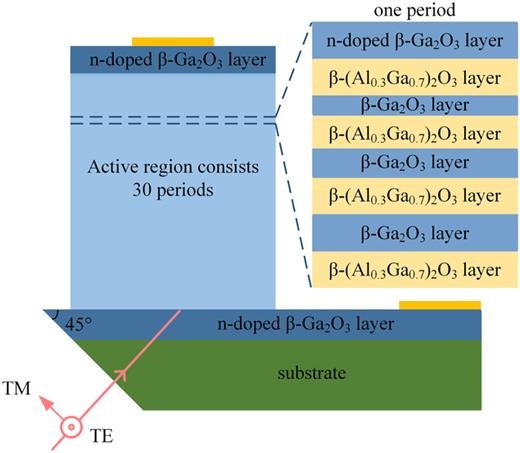
FIG. 1. Schematic cross section of the β-(AlGa)2O3/Ga2O3 QCD.

FIG. 2. Part of the conduction band structure of the β-(Al0.3Ga0.7)2O3/Ga2O3 QCD at 300 K and 0 V (a) without considering many-body effects, (b) only considering Hartree potential, (c) only considering exchange-correlation potential, and (d) considering many-body effects. The dashed lines represent potential terms.
DOI:
doi.org/10.1063/5.0254625
